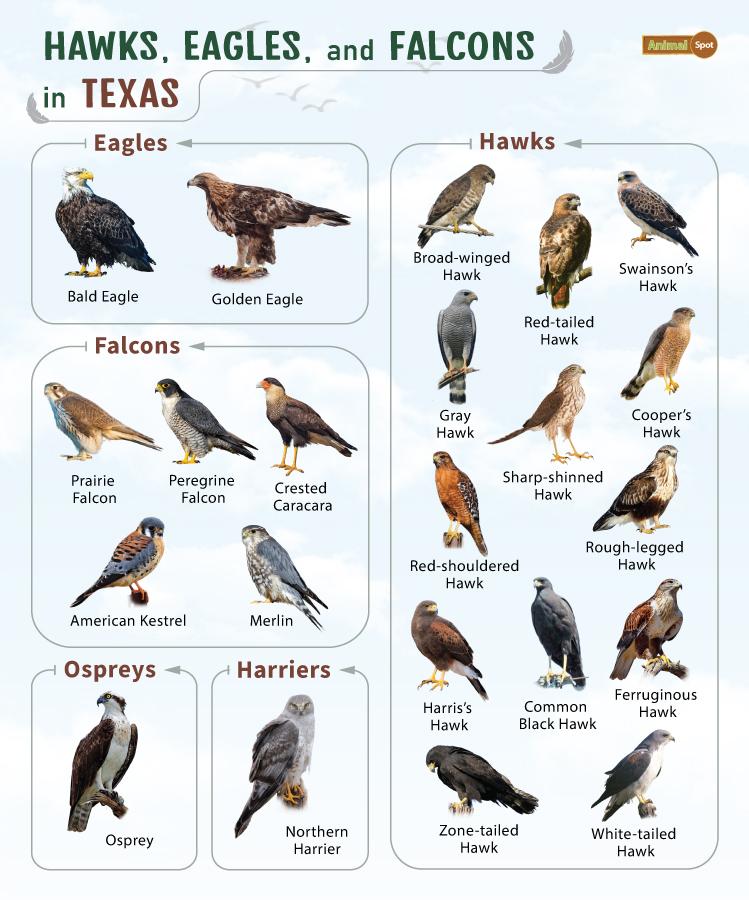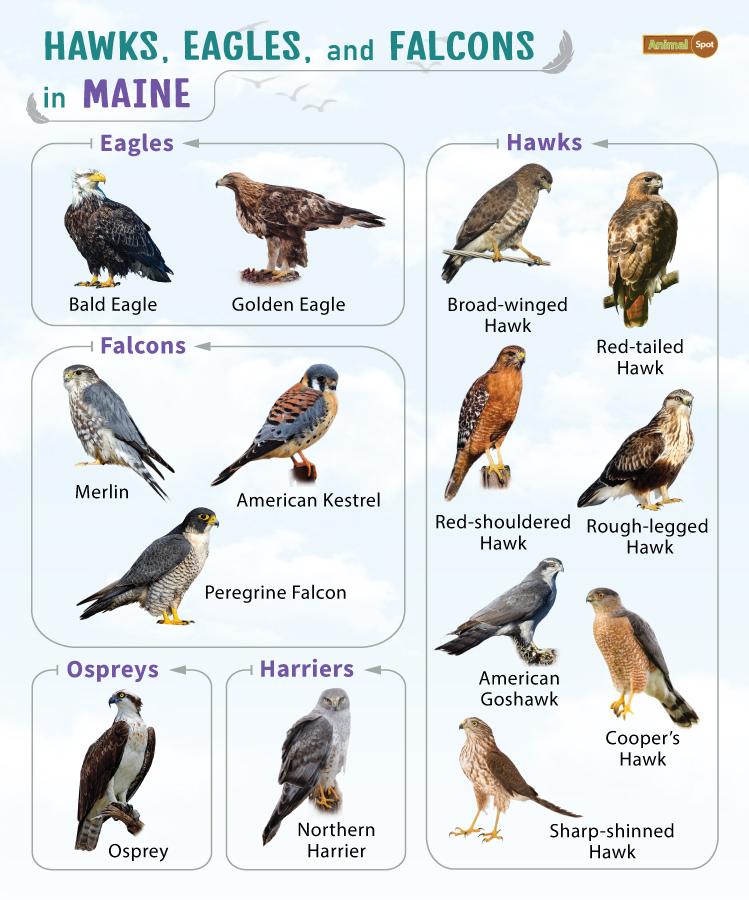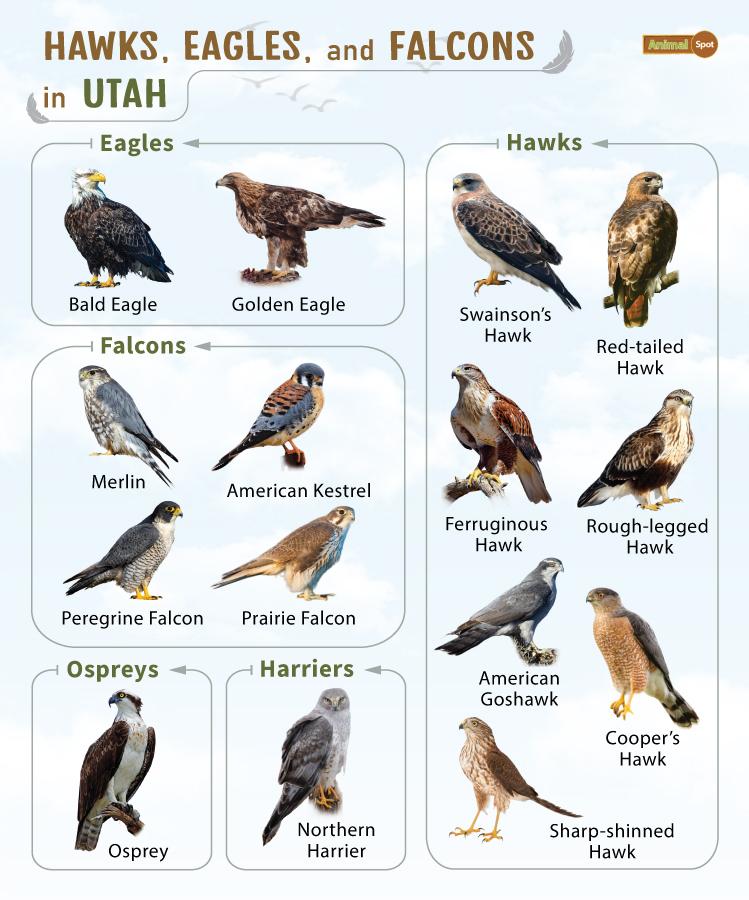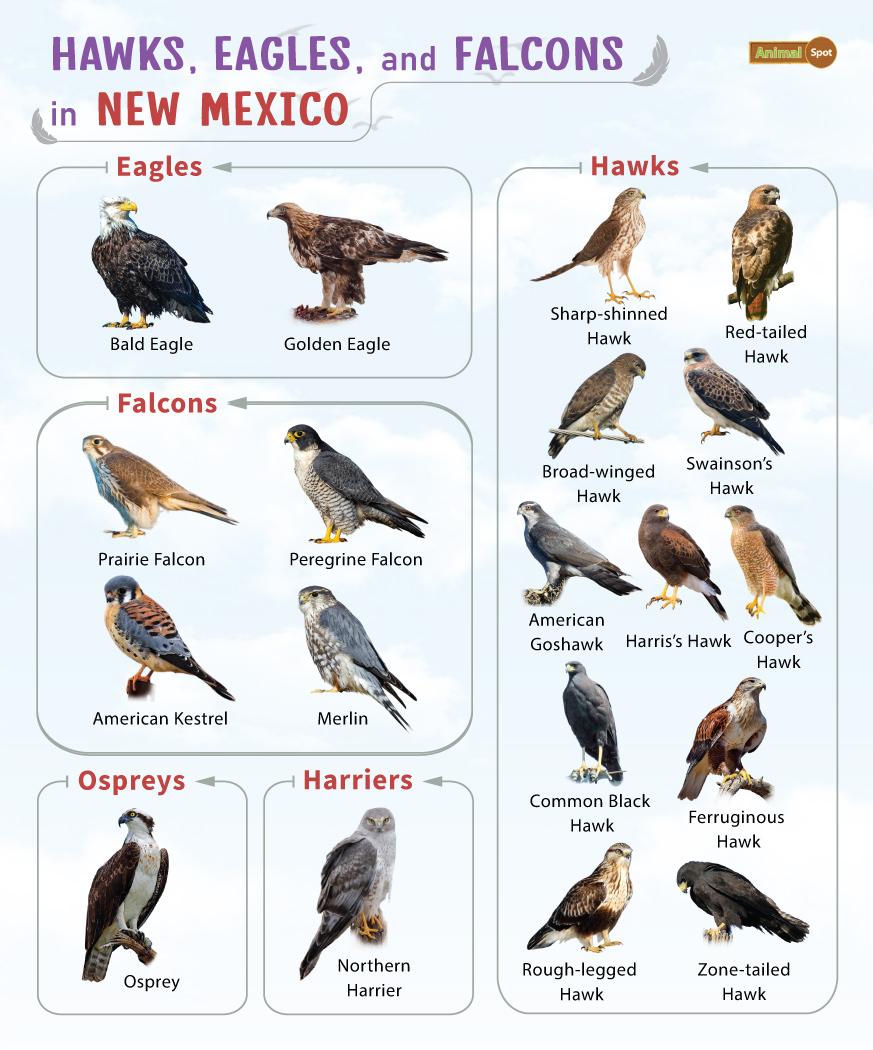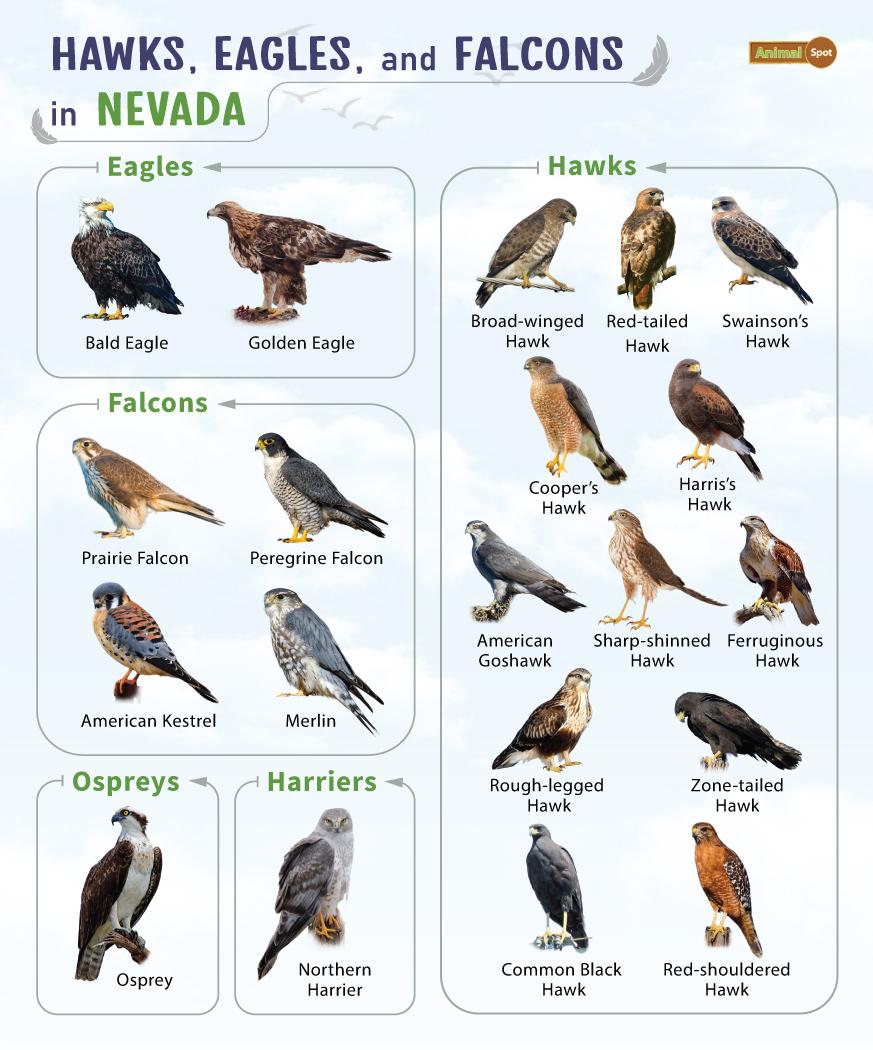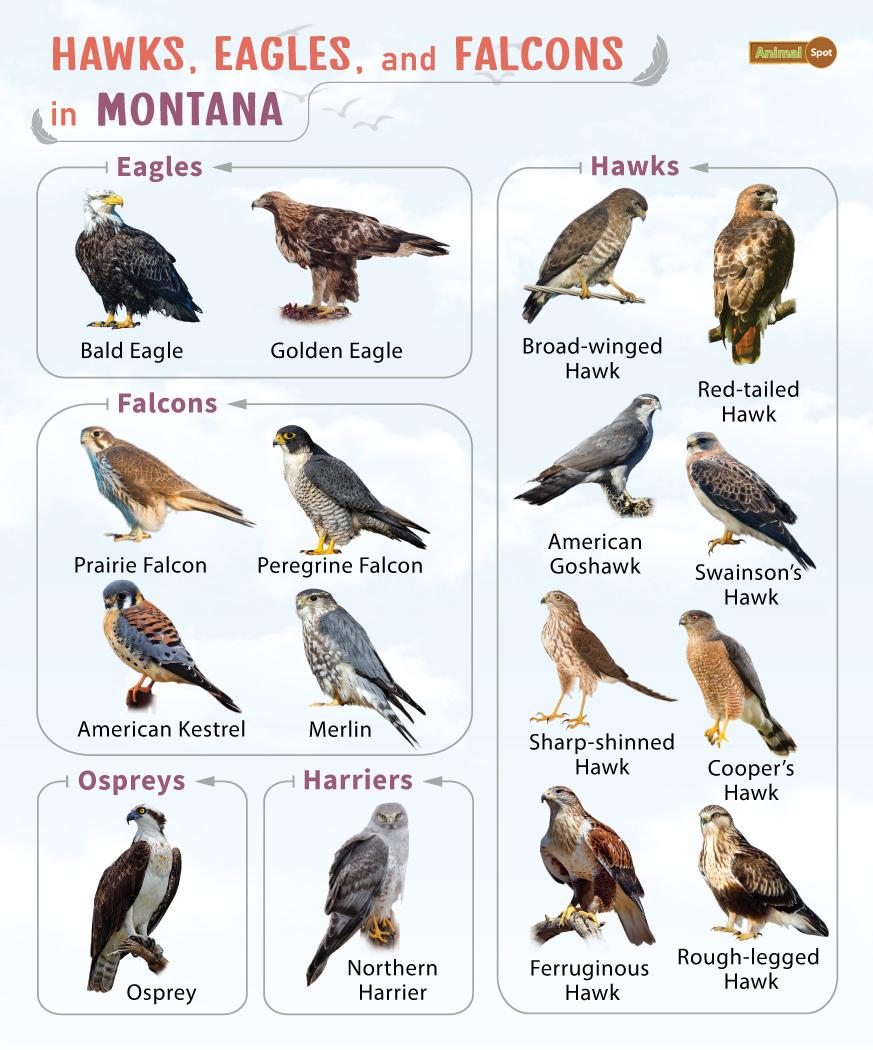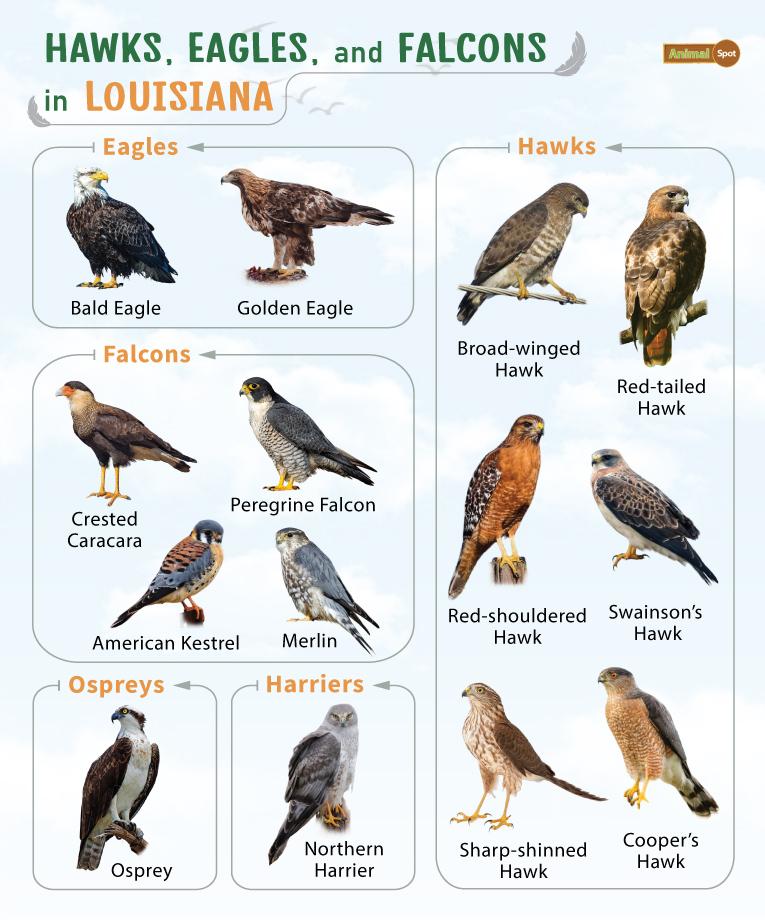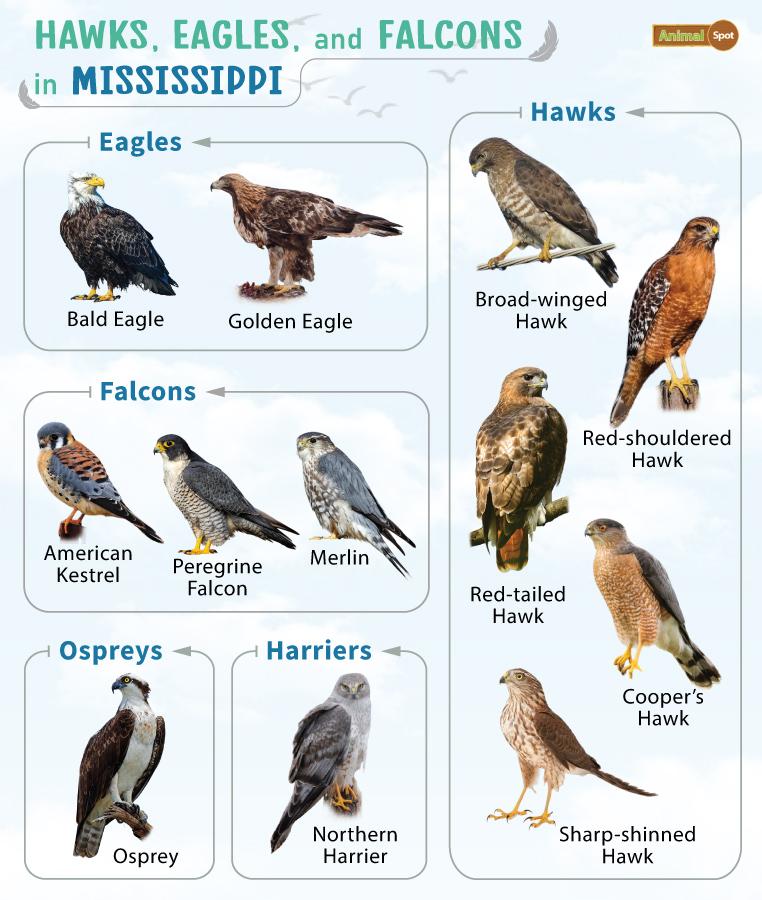Texas’ expansive landscapes provide varied habitats for falcons, eagles, and hawks. The white-tailed hawk flourishes in coastal areas, while the Harris’s hawk’s social nature aids in foraging.
Peregrine falcons adapt amidst artificial structures, and the Swainson’s hawk’s migration highlights the state’s ecological significance for these aerial predators.
List of Different Types of Hawks, Eagles, and Falcons in Texas
Eagles
There are two types of eagles native to Texas.
- Bald Eagle
- Golden Eagle
- Steller’s Sea-eagle (Accidental)
The golden eagles are mainly found in the far west of the state. Bald eagles live year-round throughout Texas as breeders, spring and fall migrants, or winter residents.
Hawks
- Sharp-shinned Hawk
- Cooper’s Hawk
- Common Black Hawk
- Harris’s Hawk
- White-tailed Hawk
- Gray Hawk
- Red-shouldered Hawk
- Broad-winged Hawk
- Swainson’s Hawk
- Zone-tailed Hawk
- Red-tailed Hawk
- Rough-legged Hawk
- Ferruginous Hawk
- American Goshawk (Accidental)
- Crane Hawk (Accidental)
- Great Black Hawk (Accidental)
- Roadside Hawk (Accidental)
- Short-tailed Hawk (Accidental)
The red-tailed, red-shouldered, and Cooper’s hawks are most common in central Texas. Harris’s hawks, the most social raptors in North America, are found in most of southern Texas and portions of central and east Texas. Another South Texas species is the tropical gray hawk.
Two species of Accipters are native to North Texas – the Cooper’s hawk and the sharp-shinned hawk. Sharp-shinned hawks are the smallest in the state, while the ferruginous hawks are the largest.
All the hawks have their unique sounds. Red-tailed hawk adults make a screaming, hoarse “kee-eeeee-arr”, lasting 2-3 seconds while soaring. Under state law, you cannot injure, kill, pursue, or catch non-game birds like hawks.
Falcons
Ospreys
Harriers
Hawk migration through Texas kicks off in August. As summer ends and fall begins, opportunities are galore to watch the birds travel across the state, especially along the Gulf Coast. Popular spots are Candy Abshier Wildlife Management Area, Bentsen-Rio Grande Valley State Park, and Hazel Bazemore County Park.
Nesting bald eagles can be seen from October to July in East Texas and along the coast from Houston to Rockport. During winter, birders can view the non-breeding eagles in the Panhandle, East, and Central Texas.
The Hagerman National Wildlife Refuge on Lake Texoma is an excellent place to spot bald eagles in North Texas.

